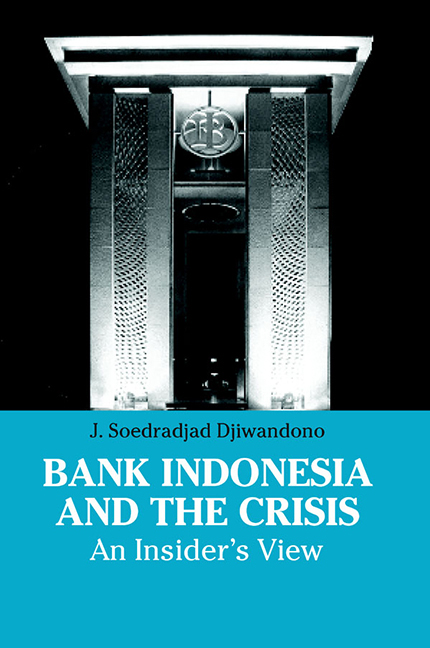Book contents
- Frontmatter
- Dedication
- Contents
- List of Tables
- Acknowledgements
- Glossary
- Prologue: The Crisis and Me
- 1 Introduction
- 2 Origin of the Crisis and Early Responses
- 3 Stabilization and Reform Programmes
- 4 Poor Programme Implementation
- 5 Stronger Programme with Weak Commitment
- 6 Bank Indonesia and the Crisis
- 7 Lessons from the Crisis
- 8 Epilogue
- Postscript
- Notes
- References
- Index
- About the Author
7 - Lessons from the Crisis
Published online by Cambridge University Press: 21 October 2015
- Frontmatter
- Dedication
- Contents
- List of Tables
- Acknowledgements
- Glossary
- Prologue: The Crisis and Me
- 1 Introduction
- 2 Origin of the Crisis and Early Responses
- 3 Stabilization and Reform Programmes
- 4 Poor Programme Implementation
- 5 Stronger Programme with Weak Commitment
- 6 Bank Indonesia and the Crisis
- 7 Lessons from the Crisis
- 8 Epilogue
- Postscript
- Notes
- References
- Index
- About the Author
Summary
Some Facts
The Indonesian crisis has lingered on, becoming the worst in Asia. It may even be simply just the worst amongst crises countries that the world has experienced in the recent past. Even though this has been generally accepted as fact, it is still pertinent to ask why is this so. In particular the question is relevant if confronted with another well accepted claim that, at the outset, the relevant fundamentals of the Indonesian economy were either at par with or even better than other crisis countries in Asia, and that the initial policy responses by the government were considered prudent and timely.
Together with two other crisis countries in Asia, namely Thailand and the Republic of Korea, Indonesia asked the IMF to assist the government in designing and implementing policy adjustment programmes through the framework of stand-by arrangements.
It is instructive to compare some macroeconomic indicators on vulnerability to external shocks, as shown in Table 9. With respect to external trade performance, both export growth as well as current account deficits in the first five years of the 1990s, and 1996 for Indonesia were better than for Thailand and Korea. The growth of credits from commercial banks prior to the crisis was relatively better for Indonesia.
- Type
- Chapter
- Information
- Bank Indonesia and the CrisisAn Insider's View, pp. 218 - 248Publisher: ISEAS–Yusof Ishak InstitutePrint publication year: 2005

